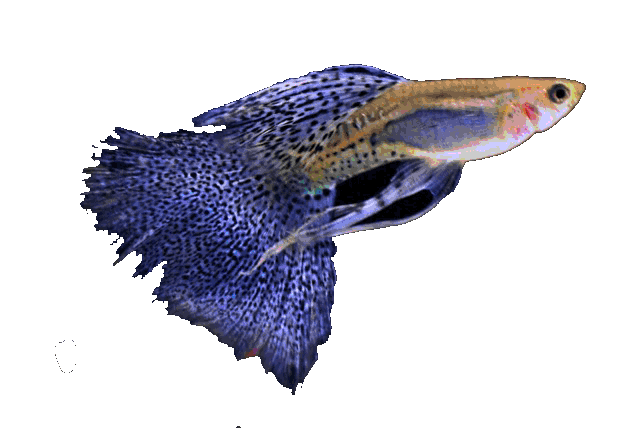
The fish of the family Potamotrygonidae are cartilaginous and are related to the shark, but also the only family that inhabits exclusively the fresh waters of South America . Most species are found in Brazil, but they are also found in Bolivia, Argentina, Colombia, Guyana, Paraguay, Peru, Suriname, and Venezuela. They live in rivers with sandy, rocky or muddy bottoms, and during the rainy season they also end up in floodplains. Fish spend a lot of their time buried in sand or mud and only their eyes look out of it.
Ancestors are descended from the genus Himantura , after geological shifts in the wider Caribbean in the Miocene, whips during development with the transition from sea to freshwater developed permanent changes to adapt to the freshwater environment. One of the most important is the change of the gland to secrete excess salt and the fish can no longer tolerate the salinity of the water. (the area of today's Amazon was once the sea)
Fish are known to be viviparous in the form of matrotrophic viviparation. Puppies develop within the female and are fully developed at birth. Milk (histotroph) is secreted in the uterus, which serves as food for the embryo after the yolk is consumed at an early stage of development. There are from one to eight puppies, the pregnancy itself can last from 3 to 12 months, it all depends on the type and environmental factors.
It can take several years for a fish to become sexually mature, for us to get a pair, it is best to have a group of young fish and over time, with a little luck, a pair is formed. selective in choosing a partner. Courting itself can be quite violent and hopefully the female is bigger than the male, otherwise she sustains injuries. The female has to defend herself from the male, as she is constantly dry and biting. When mating occurs, both fish are placed with their bellies facing each other, the male grabs the female by the mouth and this can lead to damage to the female. Let’s be careful about this and intervene if necessary.
Fertilization itself is quite fast and takes only a few seconds, the male introduces one of his claspers (transformed pelvic fin - intrommitent organ) into the cloaca of females (common exit organ of gastrointestinal tract-excretion and sexual organ in females). After mating, the male must leave the female alone.
We feed the female with embryos well and sufficiently, as she consumes a lot of energy for herself and the cubs, and her appetite increases considerably.
After birth, the pups are removed as there is a high probability of predation by adults.
Puppies have small feeding sacs at birth that they consume in a week or so.
The family currently contains 27 species in four genera ( Potamotrygon, Paratrygon , Heliotrygon in Plesiotrygon )
Family Potamotrygonidae
freshwater but river whips
Garman, 1877
Trivia
Whips have a special respiratory system, given that they have both the mouth and the gills on the underside wonder how they can breathe when lying on the sand or even when they are buried in the mud ??
The whips have an opening (spiracle) behind each eye, through which they pump water to the gills where they excrete oxygen.
Whips are dangerous and can be collected by a stranger, as everyone, without exception, has them on their tails sting.
It is located on top of the caudal fin and is protected by fleshy tissue, there are also toxic glands.
The sting penetrates the skin tissue that protects it. Toxins are different and differ from each other in toxicity, mainly cocktails of chemicals that cause severe pain and tissue breakdown (necrosis). At the peak, seek medical help immediately and immerse the affected area in as hot water as possible.
The fish change their stings for about half a year , the old sting falls off and must be carefully removed as it is still toxic.
Whips have a very long lifespan compared to other live births, they live over 20 years.
Fish are different big, everything of 25 cm in diameter of the disc ( Potamotrygon schuhmacheri ), and up to a diameter of 150 cm ( Potamotrygon brachyura ) .


Family classification
Kingdom: Animalia / animals
Trunk: Chordata / string players
Class: Chondrichthyes
Order: Myliobatiformes / sea whips
Family: Potamotrygonidae / freshwater or river whips
Genus: Potamotrygon - Garman, 1877
Potamotrygon amandae
Potamotrygon boesemani
Potamotrygon brachyura
Potamotrygon constellate
Potamotrygon falkneri
Potamotrygon humerosa
Potamotrygon apple
Potamotrygon hystrix
Potamotrygon limai
Potamotrygon magdalenae
Potamotrygon marinae
Potamotrygon orbignyi
Potamotrygon pantanensis
Potamotrygon schroederi
Potamotrygon shoemaker
Potamotrygon scobina
Potamotrygon signata
Potamotrygon tatianae
Potamotrygon tigrina
Potamotrygon yepezi
Genus: Paratrygon - Duméril, 1865
Paratrygon aiereba
Genus: Heliotrygon - Carvalho & Lovejoy, 2011
Heliotrygon gomesi
Heliotrygon rosai
Genus: Plesiotrygon - Rosa, Castello & Thorson, 1987
Plesiotrygon iwamae
Plesiotrygon nana



